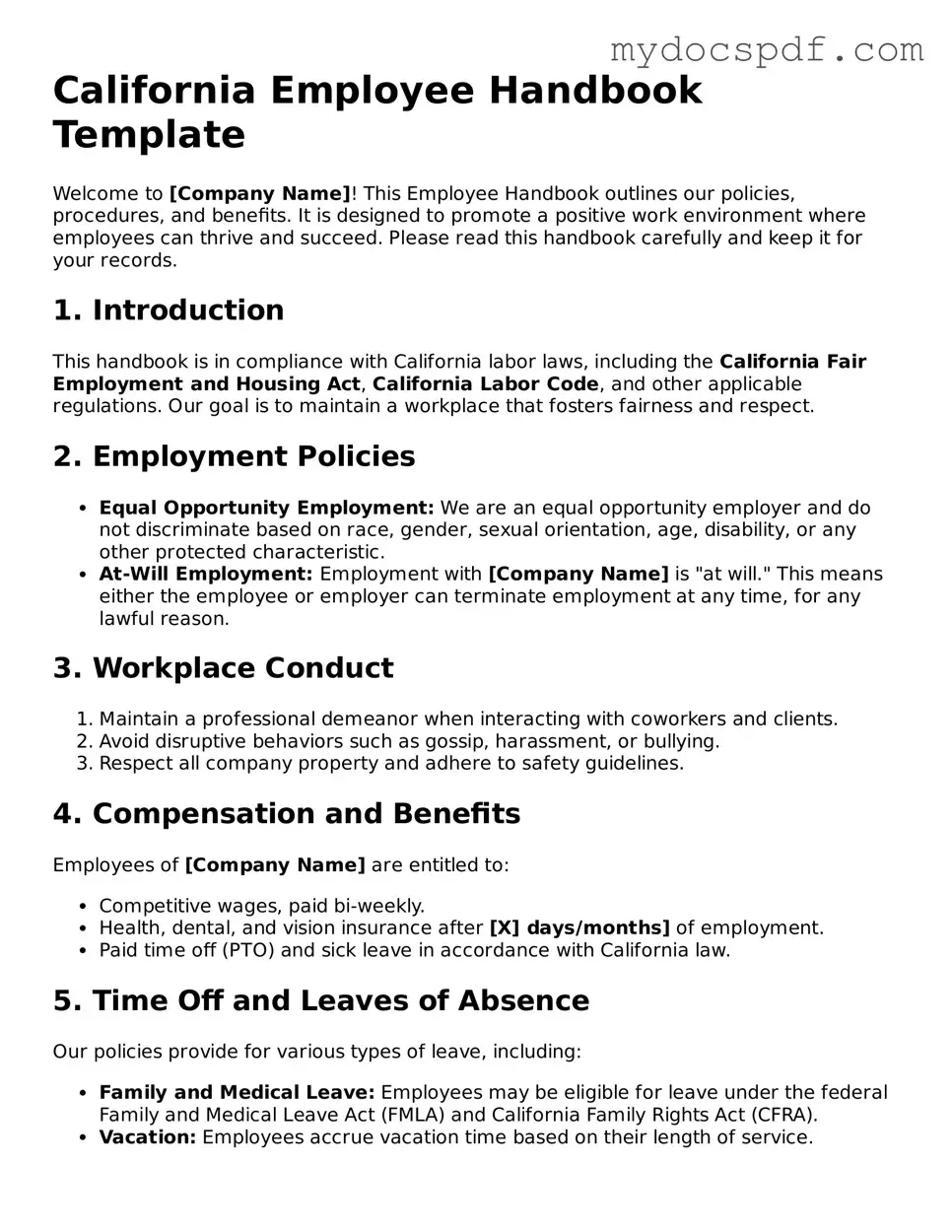California Employee Handbook Template
Welcome to [Company Name]! This Employee Handbook outlines our policies, procedures, and benefits. It is designed to promote a positive work environment where employees can thrive and succeed. Please read this handbook carefully and keep it for your records.
1. Introduction
This handbook is in compliance with California labor laws, including the California Fair Employment and Housing Act, California Labor Code, and other applicable regulations. Our goal is to maintain a workplace that fosters fairness and respect.
2. Employment Policies
- Equal Opportunity Employment: We are an equal opportunity employer and do not discriminate based on race, gender, sexual orientation, age, disability, or any other protected characteristic.
- At-Will Employment: Employment with [Company Name] is "at will." This means either the employee or employer can terminate employment at any time, for any lawful reason.
3. Workplace Conduct
- Maintain a professional demeanor when interacting with coworkers and clients.
- Avoid disruptive behaviors such as gossip, harassment, or bullying.
- Respect all company property and adhere to safety guidelines.
4. Compensation and Benefits
Employees of [Company Name] are entitled to:
- Competitive wages, paid bi-weekly.
- Health, dental, and vision insurance after [X] days/months] of employment.
- Paid time off (PTO) and sick leave in accordance with California law.
5. Time Off and Leaves of Absence
Our policies provide for various types of leave, including:
- Family and Medical Leave: Employees may be eligible for leave under the federal Family and Medical Leave Act (FMLA) and California Family Rights Act (CFRA).
- Vacation: Employees accrue vacation time based on their length of service.
- Sick Leave: California law mandates paid sick leave; refer to the specific policy in this handbook.
6. Employee Acknowledgment
By signing below, you acknowledge that you have received, read, and understood the [Company Name] Employee Handbook. You agree to abide by the policies contained within.
Signature: _____________________________
Date: _____________________
7. Contact Information
If you have any questions regarding the policies in this handbook or need clarification, please contact:
[HR Representative Name]
Email: [HR Email]
Phone: [HR Phone Number]
Thank you for being a part of [Company Name]. We look forward to achieving great success together!
